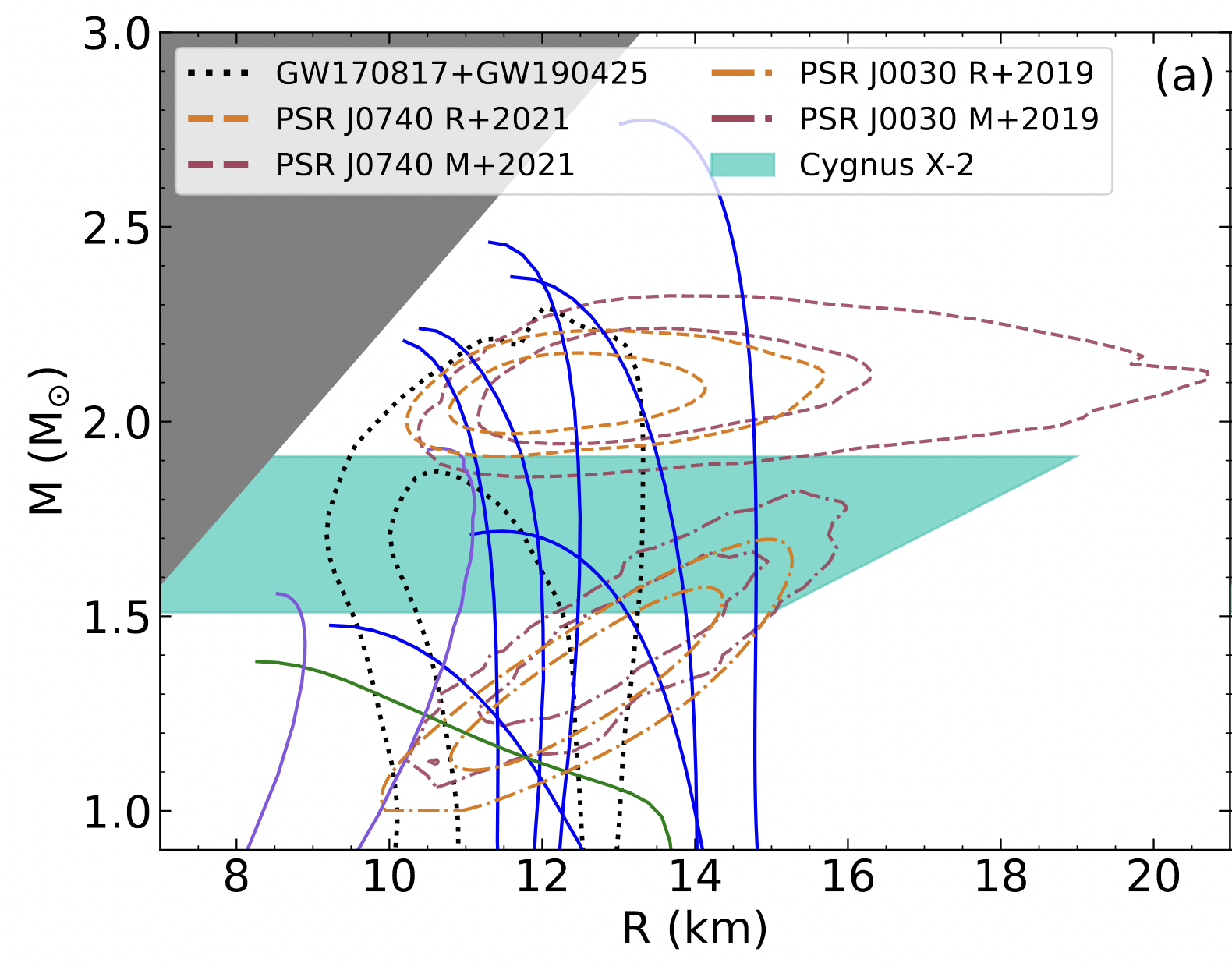NICER / ISS Science Nugget
for February 3, 2022
Using reflection to constrain the radius of a neutron star
NICER's primary mission is to measure the radii of multiple neutron stars. The driving requirements for NICER's design flowed from a pulsation "light curve" modeling method applies to certain pulsars; in this approach, gravitational light-bending, which depends on the star's mass and radius, affects the pulses we see as hot spots on the star's surface rotate in and out of our field of view. There are other methods. In a paper recently accepted by The Astrophysical Journal, Renee Ludlam (Caltech) and collaborators apply the technique of "disk reflection" to place an upper limit on a neutron star's radius.
Ludlam et al. used NICER and NASA's NuSTAR telescope to make coordinated observations of the binary star system called Cygnus X-2, which consists of a neutron star and a low-mass companion star. The neutron star draws matter from its companion and captures it in an accretion disk. Because this disk is illuminated by intense X-rays from the neutron star, some of that emission reflects toward us. Gas in the accretion disk consists of many elements, but iron atoms fluoresce especially efficiently in a characteristic spectral line around 6 keV photon energy, and thus provide an opportunity to measure the disk's properties. The iron emission lines are normally very narrow in energy, but the spinning accretion disk's high speeds, approaching large fractions of the speed of light, impart Doppler blue and red shifts onto these sharp lines. Moreover, the neutron star's gravity well leads to a gravitational red shift as the photons struggle to escape. The result is a distorted X-ray spectral feature that is much broader than the original line, with a shape that is determined by several key factors, including the inclination angle from which we see the disk, and its innermost radius - where matter is moving the fastest and the gravitational redshift is the strongest. Ludlam et al. model these effects and are able to derive a firm upper bound on the neutron star radius.

Figure: The mass and radius plane of neutron stars is used to confront theoretical models (green, purple, blue solid curves) with data (dashed contours from NICER measurements of pulsars J0740 and J0030; black dotted lines from LIGO gravitational-wave measurements, and blue-green shaded polygon for the new work by Ludlam et al.) for the X-ray binary Cygnus X-2. Independent optical measurements of the companion star's orbital motion suggest that the neutron star's mass is approximately 1.7 times the mass of our Sun, intermediate between the masses of the two neutron stars previously studied by NICER using light curve modeling.
<< Previous
Main Index
Next >>